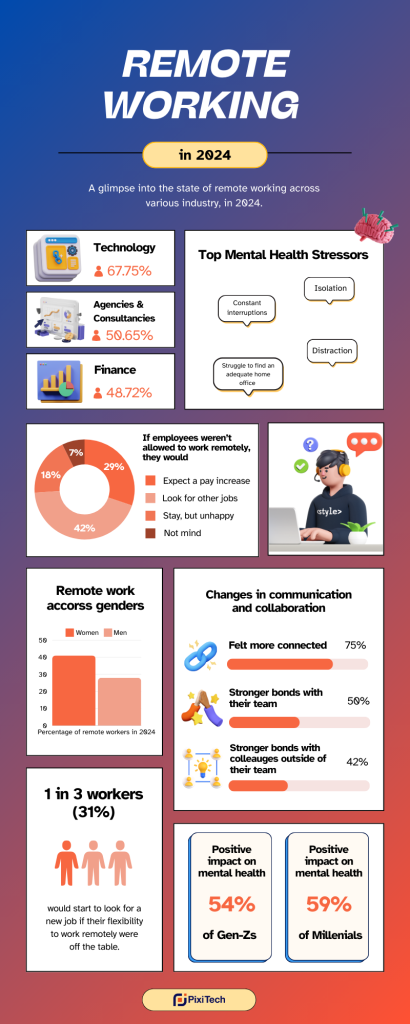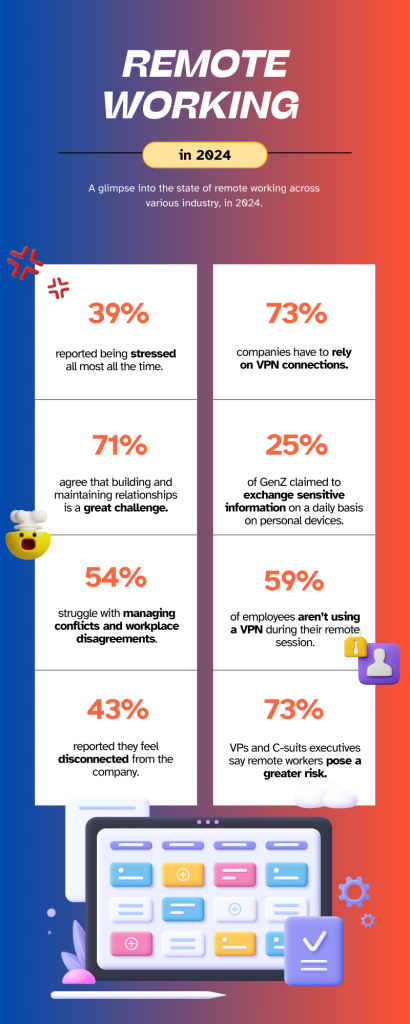Remote Hiring in 2024: Hit or Miss?
The shift towards remote hiring, skyrocketing during the pandemic, has shaped how companies operate from 2021 to late 2023. However, as some employers argue against the necessity of continued remote work, many remote hiring policies are on hold. Despite this, assessing the viability of remote hiring in 2024 remains crucial.
The question remains for 2024: Is hiring remote resources still a good choice for your business? Spoiler alert: it might be - or might not?
Pros - Every Resource, Everywhere, Any Price, All At Once
Hiring without borders - the ultimate reason
- Global talent pool
The idea of a "local" workforce is becoming quaint. As of 2024, savvy companies are breaking free from geographical constraints, turning their hiring strategies global. A U.S.-based tech giant can now seamlessly integrate AI specialists from Europe and data analytics teams from Asia, each bringing distinct insights and skill sets that are rare or unavailable domestically. Consider the broadened perspectives and the fresh, innovative solutions these diverse teams contribute.
It has also been a game-changer for many, especially those with disabilities for whom daily commutes and non-inclusive office environments were significant hurdles. The flexibility of location-independent roles means companies can retain highly qualified individuals who might otherwise exit the workforce.
- Strategic flexibility in hiring
The dynamics of local hiring are filled with challenges, particularly in terms of scalability and adaptability. Launching new products often necessitates tapping into new markets, which traditionally meant hiring locally and, consequently, facing the possibility of mass layoffs if market conditions shift or the company pivots its focus. This approach can tarnish a company's reputation and morale.
In contrast, leveraging a global, contract-based workforce can provide the flexibility needed for businesses to scale operations up or down without the disruptive cycle of hiring and layoffs. Utilizing hiring agencies or service providers streamlines this process, ensuring companies can adapt quickly to market changes or project completions with minimal disruption.
The financial upside
The freedom to choose between multiple hiring models—be it full-time remote employees, part-time consultants, or freelance experts on a project basis—provides a distinct advantage. This flexibility is precious for SMEs and startups, where resource allocation needs to be strategically managed to balance growth, sustainability, while still keeping everything budget-friendly.
Consider TrueCar, a Santa Monica-based company specializing in automotive pricing and digital retailing. In a strategic move, TrueCar reduced its physical office footprint by approximately two-thirds (and still aims to further downsize to just 4,000 square feet!) This reduction translates into substantial cost savings across various fronts, including office supplies, cleaning, and maintenance.
Companies. like TrueCar, find that the savings accrued from reduced physical office needs can be redirected towards enhancing their remote work infrastructure, resulting in better employee benefits, and a boost in overall operational efficiency.
Productivity booster
- Flexible hours
Remote work allows employees to choose their most productive hours, increasing efficiency and output. Recent studies from 2023 and 2024 confirm that when workers control their schedules, their motivation and engagement soar. Consider the case of a software developer who discovers their peak productivity spikes at dawn or in the still of the night. Who are we to judge his “9 to 5”? According to Microsoft, 87% of hybrid employees say they’re productive at work.
- Strategic partnership
In the tech world, smart hiring means playing to your strengths—and sometimes, those of others. Partnering with specialists in niche areas can be a masterstroke for tech firms. It allows the internal team to stay focused on big-picture goals like expanding the market and engaging customers, while expert partners handle the nitty-gritty technical details. This approach cuts down on time spent learning jargon and streamlines operations, letting everyone work at what they do best. It's a win-win: the work gets done faster, innovation speeds up, and the company sharpens its competitive edge.
Employees Matter - A touch on retention, satisfaction, and balance.
- Work-life balance
The quest for work-life balance reshapes modern employment, with workers and companies reaping the benefits. Employees who enjoy flexible schedules are not just happier—they’re also driving their firms toward higher profitability. Data from the Flex Index and Boston Consulting Group highlights this trend, showing that revenues at fully flexible firms surged by 21% from 2020 to 2022—quadruple the growth rate of their less flexible counterparts.
- Impact on mental health
The traditional "9 to 5 culture" often contributes to employee stress, with even minor annoyances. Ursula Mead, CEO and co-founder of InHerSight, points out that with such a “mental first” policy, companies now have a chance to treat their employees as whole individuals, committing to healthier work environments for everyone involved.
Furthermore, companies that adopt remote work often observe a decrease in employee burnout and turnover, which leads to a more stable and engaged workforce. The feedback from employees is clear—they feel less stressed and more satisfied with arrangements that respect their personal time and mental health.

Cons - The Other Side of The Coin
Timezone is the real deal
- Miscommunication
Without the nuances and immediate feedback of face-to-face interactions, the intent behind written words can be easily misinterpreted, leading to confusion and conflict within teams. With that being said, a report by FlexOS highlights that 30% of employees experience frustration due to unclear communication from their superiors.
- Time-zone differences
Another major hurdle in remote work environments is managing time zone differences, particularly with teams that span the globe. The challenge of aligning schedules is well illustrated by a scenario where a project manager in New York struggles to coordinate with developers in India and designers in Europe. These differences can result in significant delays and inefficiencies in project delivery.
To mitigate these issues, companies are finding it beneficial to ensure a reasonable overlap in working hours among team members. For example, Atlassian's CTO, Rajeev Rajan, mentioned that on teams of around 150 engineers, ensuring a 4 to 6 hour overlap in schedules can drastically improve collaboration and efficiency.
Security is key
Remote work introduces additional security risks, such as data breaches and unauthorized access. Without the controlled security protocols of an office setting—such as secure networks and monitored access—home environments can become easy targets for data theft and cyber exploits.
Since the onset of COVID-19, the cyber threat landscape has evolved dramatically, seeing a whopping 238% spike in cyberattacks. Cybercriminals are quick to target the most vulnerable points, which now happen to be the numerous home offices set up in a rush during the pandemic. Add technologies like deepfakes into the mix, and the risk escalates; these tools can create eerily accurate impersonations of colleagues or executives, leading to sophisticated frauds that can deceive even the vigilant eye.
Managing remote performance
As we move deeper into 2024, organizations will be (as they should!) keeping tabs on employees in term of productivity and overall performance under flexible work conditions. Many companies are contemplating a return to office policies as a solution to close any gaps in employee engagement that have surfaced with remote work.
The data suggests a trend: when productivity dips, the knee-jerk reaction is often to bring everyone back onsite. However, this approach not only overlooks the benefits of flexible working but also needs to pay attention to potential strategies to enhance engagement without sacrificing the flexibility that employees value.
- How do you know if your employees are actually working?
Yet, digital tools and management strategies can effectively replicate these benefits in a remote setting. Project management platforms like Asana, Trello, and Jira are instrumental in managers keeping a pulse on project timelines and individual contributions without the need for physical oversight. Beyond software solutions, implementing regular check-ins and thorough performance reviews helps maintain a dialogue between managers and team members, ensuring any concerns are addressed swiftly and performance stays on track.

People Who Are Still Doing It
So, back to the main concern: Is remote working a hit or miss?
It depends, one must say
That’s pretty much the playbook at Chicago-based law firm Chapman & Cutler. Led by Sarah Andeen, the head of library and research services, the firm operates on a flexible remote work policy tailored to the specific needs of different departments and client demands. This approach recognizes that remote work isn’t a one-size-fits-all but rather based on each department’s needs and requirements.
- A hit
The strategy leans heavily towards flexibility for small and medium-sized enterprises (SMEs) and startups. These smaller, often more agile entities find great value in off-shore hiring and outsourcing, allowing them to start small and scale quickly without the overhead of large office spaces. Rob Sadow, co-founder of Flex Index, suggests that as more firms emerge and existing office leases expire, the propensity for adopting flexible work policies is likely to increase. This shift is especially pronounced among newer, smaller companies that can maneuver more nimbly than their larger counterparts.
Statistics reinforce this trend, noting that those in tech and information sectors—predominantly based in tech hubs like San Francisco and Los Angeles—are leading the charge in remote work, with these areas seeing the highest percentages of full-time remote workdays, at 46% and 40% as of November.
- A miss
Adapting to remote work isn't equally feasible for all sectors. Large corporations, and industries that prioritize stringent security measures often find that traditional, on-site work setups are more advantageous. According to Code42, 76% of information security experts anticipate an increase in data loss due to insider events. This underscores a significant challenge: the mere presence of security tools doesn't guarantee their use by employees.
This gap in compliance is particularly critical in sectors where security and resource control are crucial. The risks linked to remote work, such as potential data breaches and the lack of direct oversight, can indeed overshadow the potential benefits. For instance, Tech.co’s 2024 report reveals that 59% of employees admitted to not using a VPN provided by their employers, highlighting a significant lapse in adopting prescribed security measures.
However,
Despite all the pros and cons listed throughout this discussion, remote working remains a nuanced issue. Whether it proves to be a hit or a miss depends largely on the specific characteristics of a firm—its priorities, industry, size, and how well remote strategies align with its operational criteria. It's always wise to keep all options on the table. Firms should consider maintaining a blend of on-site employees while also tapping into offshore and remote resources. This balanced approach allows organizations to leverage the best of both worlds, adapting dynamically to changing business needs and market conditions. Ultimately, the goal is to ensure that the chosen work arrangements serve to enhance, not hinder, your business objectives.
Either way, the aim is to make it a win for your organization, turning flexibility into a strategic advantage rather than a struggle.

